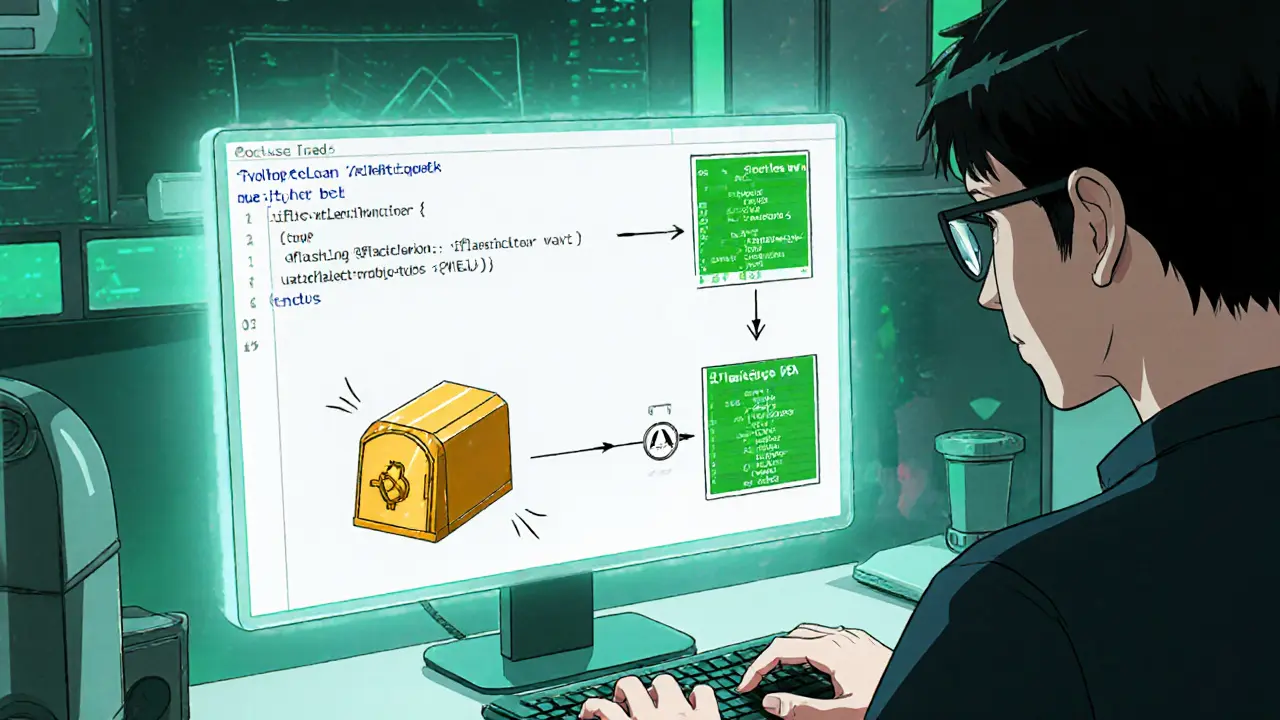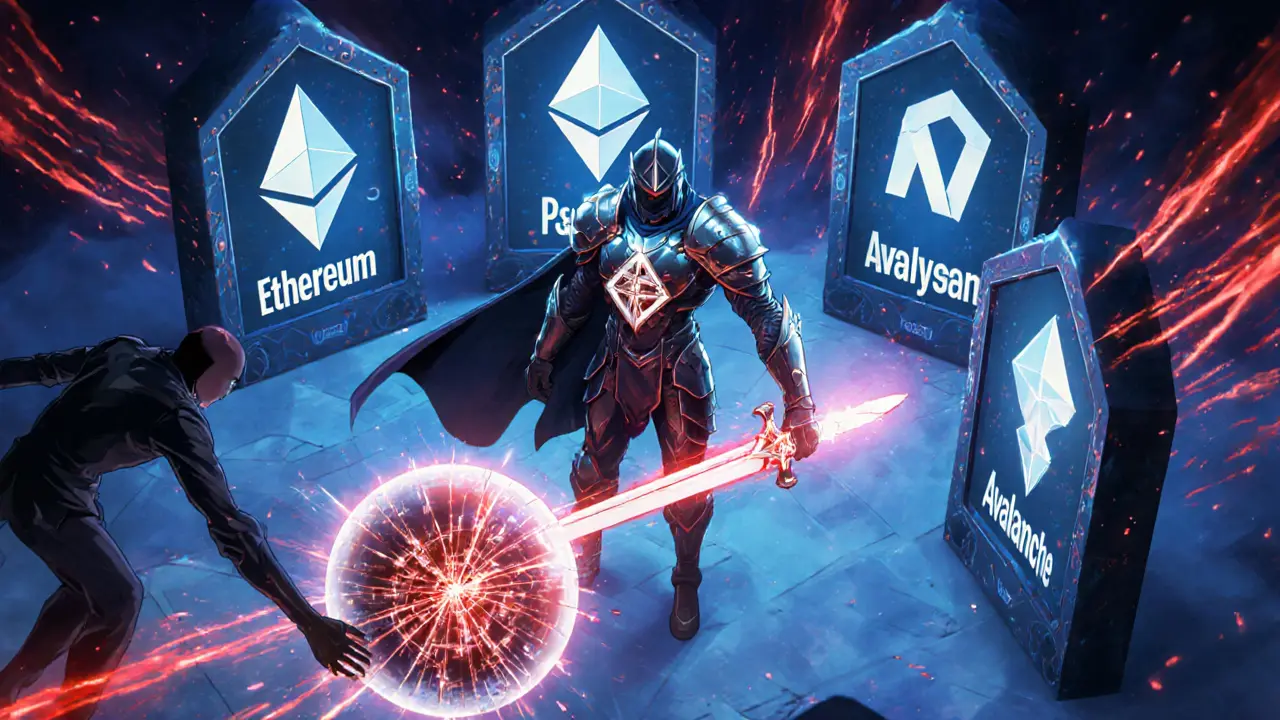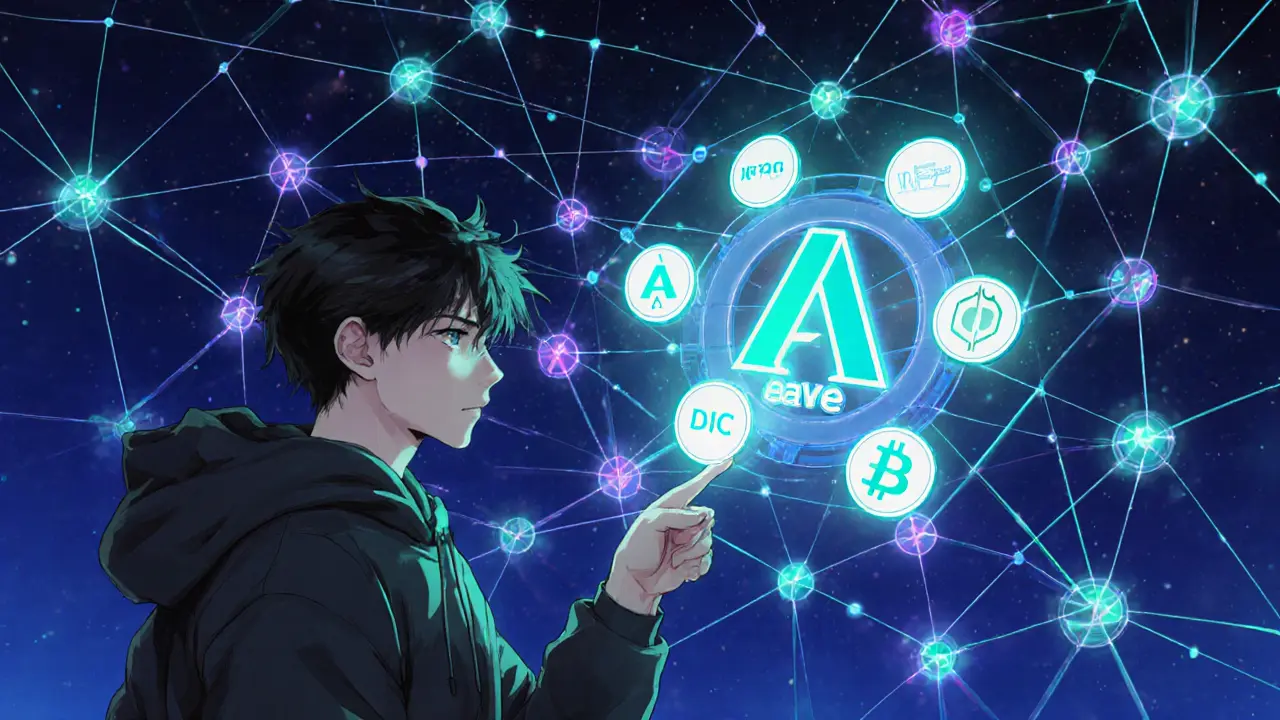Flash Loan Calculator
Estimated Profitability
Key Takeaways
- Flash loans are uncollateralized loans that must be repaid within a single blockchain transaction.
- They rely on the atomic nature of Ethereum‑compatible smart contracts, making the loan effectively risk‑free for lenders.
- Common legitimate uses include arbitrage, collateral repositioning, and liquidation management.
- Implementation requires solid Solidity skills, gas‑optimization know‑how, and thorough test‑net testing.
- Security risks such as flash‑loan attacks are real, so developers should follow the latest protocol safeguards.
In the world of flash loan is a uncollateralized, instant loan that must be repaid within the same blockchain transaction, developers have a powerful tool for building complex DeFi strategies. Unlike traditional borrowing, there is no credit check or collateral lock-everything hinges on a single atomic transaction that either completes fully or rolls back completely.
Flash loans first appeared on the Aave protocol in 2020, although earlier research papers trace the concept back to 2018. Since then, more than US$2trillion of flash‑loan volume has been recorded across EVM‑compatible chains in 2024 alone, highlighting rapid adoption among sophisticated traders and automated bots.
How Flash Loans Work: The Atomic Transaction Model
Atomicity is a built‑in property of Ethereum transactions: either every step succeeds or none do. A flash‑loan smart contract follows three simple steps:
- Call the flash‑loan provider (e.g., Aave) requesting an amount of a supported asset.
- Execute any custom logic-arbitrage, liquidation, collateral swap-within the same transaction.
- Return the borrowed amount plus the protocol fee before the transaction finishes.
If the contract cannot repay the loan plus fee, the EVM reverts the entire transaction, leaving the blockchain state unchanged. This "all‑or‑nothing" guarantee eliminates default risk for the lender.
Core Technical Ingredients
Several entities make flash loans possible:
- Smart Contract is a self‑executing program that runs on the blockchain, enforcing the atomic repayment condition.
- Ethereum Virtual Machine (EVM) provides the execution environment where atomicity is enforced.
- ERC‑20 Token standards allow the loaned asset (e.g., DAI, USDC, WETH) to be transferred programmatically.
- Gas Fee is the cost paid to miners/validators for executing the transaction; failed attempts still consume gas.

Popular Providers and Their Fee Structures
| Provider | Typical Fee | Supported Assets | Market Share |
|---|---|---|---|
| Aave | 0.09% | DAI, USDC, ETH, USDT, WETH | ~47% |
| Balancer | 0.10% | DAI, USDC, WETH | ~19% |
| Uniswap V2 (Flash Swaps) | 0.30% (swap fee) | All ERC‑20 pools | ~15% |
Fees are modest compared to traditional short‑term borrowing, but they are still paid in the same transaction, so developers must account for them when calculating profit margins.
Common Legitimate Use Cases
- Arbitrage: Borrow 100USDC, sell on ExchangeA for 101USDC, buy back on ExchangeB for 100USDC, repay loan + fee, pocket the spread.
- Collateral Repositioning: Move collateral from one lending protocol to another with a better interest rate without ever holding the assets yourself.
- Liquidation Management: Use a flash loan to pay off an under‑collateralized position, claim the liquidated assets, and repay the loan.
All three scenarios complete in under a second, making them impossible with conventional finance.
Step‑by‑Step Guide to Building a Basic Flash‑Loan Contract
- Set up a Solidity development environment (Hardhat or Foundry) and import the Aave flash‑loan interface.
- Write a contract that inherits
IFlashLoanReceiverand implements theexecuteOperationcallback. - Within
executeOperation, insert your custom logic (e.g., call a DEX for arbitrage). - After the custom logic, approve the Aave pool to pull back the borrowed amount plus the 0.09% fee.
- Deploy to a testnet, fund the contract with a small amount of ETH for gas, and run a simulated flash‑loan using the Aave test pool.
- Iterate, optimize gas usage, and once confident, execute on mainnet with the desired loan size.
Experienced developers typically need 2-5days for a simple example, but complex multi‑protocol strategies can take weeks of testing and audit.

Risks and Security Considerations
Even though the protocol itself carries “zero default risk,” the surrounding ecosystem is not immune:
- Flash‑Loan Attacks: Malicious actors borrow huge sums to manipulate price oracles, drain liquidity, or exploit buggy contracts. Notable incidents in 2023 forced several protocols to patch their price‑feed mechanisms.
- Gas Loss: If a transaction reverts, the borrower still pays the gas used, which can be costly for complex operations.
- Liquidity Limits: Providers cap loans based on pool depth. Attempting to borrow more than available will cause the transaction to fail.
Best practices include using reputable price feeds (e.g., Chainlink), adding slippage protections, and running extensive simulations on forked mainnet states.
Regulatory Landscape
As of 2025, no jurisdiction has explicit regulations targeting flash loans. Central banks, such as the Bank of Canada, note their potential systemic impact but consider them a niche tool for sophisticated actors. Nevertheless, developers should stay informed about emerging AML/KYC expectations around large, rapid capital movements.
Future Outlook
Cross‑chain flash loans via Chainlink’s CCIP are expected to launch in Q32025, opening up liquidity arbitrage between Ethereum, Polygon, and Avalanche. Meanwhile, Aave v3 introduced tighter caps and new anti‑sandwich protections to curb attack vectors. The consensus among experts is that flash loans will remain a specialized, high‑skill instrument, essential for DeFi composability but unlikely to reach mainstream retail adoption.
Frequently Asked Questions
What makes a flash loan “risk‑free” for lenders?
Because the loan and its repayment are wrapped in a single atomic transaction, the blockchain will revert the whole operation if the borrower cannot return the funds. From the lender’s perspective, the loan never actually occurs unless repayment conditions are met.
Which assets are most commonly used for flash loans?
Stablecoins such as DAI and USDC dominate, followed by native tokens like ETH and its wrapped version WETH. These assets have deep liquidity across most DeFi pools, making large‑scale borrowing possible.
Can I use flash loans without writing Solidity code?
Some platforms offer pre‑built templates and low‑code SDKs, but any meaningful strategy still requires understanding of gas costs, token approvals, and transaction ordering. Pure “no‑code” solutions are extremely limited.
How do flash‑loan attacks work?
An attacker borrows a huge amount, uses it to temporarily manipulate market prices or oracle feeds, performs a profitable exploit (e.g., draining a liquidity pool), then repays the loan-all within one transaction. The profit comes from the manipulated state, not from the loan itself.
What are the typical fee rates for flash loans?
Most major providers charge between 0.09% and 0.30% of the borrowed amount. Fees are paid in the same transaction, so they must be factored into any profit calculation.

ചഞ്ചൽ അനസൂയ
October 11, 2025 AT 09:24Flash loans are a neat trick in DeFi where you can borrow huge sums without collateral, but you have to pay it back in the same transaction.
Think of them as a flash of lightning-instant, powerful, and gone before anyone can react.
They're most useful for arbitrage, liquidation protection, or swapping assets when you spot a price mismatch.
Just remember the gas fees can eat your profit, especially on congested networks.
If you run the calculator, plug realistic gas costs and watch the numbers, because optimism alone won't save you.
Stay curious and keep testing small amounts before you swing for the fences.
gayle Smith
October 12, 2025 AT 03:27Brace yourselves, because flash loans are the high‑octane turbo‑boost of the DeFi world, a pure adrenaline rush for anyone daring enough to juggle uncollateralized capital.
Picture this: you swoop in on a price discrepancy across two AMMs, siphon a massive sum, execute a split‑second arbitrage, and settle the debt before the block finalizes – all while the market barely registers your presence.
The protocol fee, be it 0.09% on Aave or 0.30% on Uniswap V2, is the tiny toll for traversing this financial warp‑drive.
But don’t be fooled; the gas bill can masquerade as a silent assassin, turning a sweet profit into a net loss if you don’t factor in network congestion.
Liquidity pools act as your runway, and slippage is the wind that can blow your plan off course in a heartbeat.
When you feed the calculator, think of it as your mission control console, translating raw numbers into a survivability score.
Timing is everything – a single block is roughly 12‑15 seconds, so any hiccup in your smart contract logic spells disaster.
Risk management here isn’t a checklist; it’s an art form where you must pre‑audit every call and anticipate edge‑cases.
If you’re new, start with modest borrow amounts; treat each flash loan as a lab experiment, not a Broadway debut.
Remember, the whole ecosystem thrives on trust and precision – one rogue transaction can erode confidence across the network.
In the grand tapestry of DeFi, flash loans are the lightning rods that attract both awe and scrutiny.
Use them wisely, respect the underlying math, and watch the profit curve rise like a phoenix from the ashes of transaction fees.
And above all, keep your code battle‑tested; the blockchain never forgives a single typo.
Stay hungry, stay humble, and let the flash be your guide.
mark noopa
October 12, 2025 AT 21:30Okay, so flash loans are like the unicorns of DeFi – magical, rare, and you need a *lot* of sparkle to catch one.
First off, you borrow a massive chunk of crypto without any collateral, but you gotta return it inside the same transaction, no take‑backs.
If you miss the deadline, the whole thing reverts, like a bad binge‑watch decision you wish you could undo.
💡 Pro tip: always run the calculator with realistic gas prices – otherwise you’ll think you’re making a profit, but the network will bite you hard.
The protocol fee varies: Aave’s 0.09% is practically a whisper, while Uniswap V2’s 0.30% feels like a shout in a quiet room.
Arbitrage is the most common use‑case: you spot a price gap, flash‑borrow, swap, repay, and pocket the spread.
But don’t forget about liquidation bots – they can swoop in and steal your opportunity if you’re too slow.
Also, slippage can eat your margins quicker than you can say “gas fee”.
When coding, make sure your smart contract handles re‑entrancy attacks, or you’ll end up a sad meme.
Remember, the blockchain is unforgiving; one typo and your transaction vanishes into the ether.
🚀 So test on testnet, keep an eye on gas, and don’t get greedy.
In short: flash loans are powerful, but they’re also a high‑risk, high‑reward rollercoaster – strap in, watch the numbers, and enjoy the ride.
Rama Julianto
October 13, 2025 AT 15:34Listen up – flash loans ain’t a playground toy, they’re a precision instrument for seasoned traders.
First, you need to know the exact fee structure of the protocol you’re using; Aave’s 0.09% is cheap but you still pay gas on each step.
If you underestimate gas, your arbitrage will turn negative faster than a meme coin crash.
Second, the calculator is only as good as the data you feed it – real‑time price feeds matter.
Third, you must code your contract to revert on any failure; otherwise you’ll burn massive ETH on failed attempts.
Finally, test aggressively on a fork or testnet, and monitor pending transaction pools to avoid front‑running.
Don’t be sloppy, or you’ll be the next cautionary tale on r/defi.
Helen Fitzgerald
October 14, 2025 AT 09:37Great tool for spotting quick profits!
Jon Asher
October 15, 2025 AT 03:40Totally agree, start small and let the calculator guide you before you go full‑throttle.
It’s the safest way to learn the ropes without burning a fortune on gas.
Scott Hall
October 15, 2025 AT 21:44Yo, those jargon bombs are cool but remember the real world latency – you might not win the race if the mempool’s jammed.
Jade Hibbert
October 16, 2025 AT 15:47Sure, flash loans sound fancy, but if you can’t even handle a basic gas estimate you’ll end up looking like a clueless newbie.
Leynda Jeane Erwin
October 17, 2025 AT 09:50While the aggressiveness is noted, it is imperative to acknowledge that thorough due‑diligence on fee structures and gas estimations constitutes prudent practice.
Brandon Salemi
October 18, 2025 AT 03:54Short and sweet – love the optimism!
Sanjay Lago
October 18, 2025 AT 21:57Exactly, keep your bets small, observe the outcomes, then scale up when you’ve validated the model – that’s the smart way.
Siddharth Murugesan
October 19, 2025 AT 16:00Honestly, flash loans are just a glorified gamble for people who think they can outsmart the market without real skill.
Hanna Regehr
October 20, 2025 AT 10:04Every tool can be misused, but with proper education and risk management, flash loans become a valuable strategy.
Anjali Govind
October 21, 2025 AT 04:07I'm curious about how the calculator handles rapid price swings – does anyone know if it updates mid‑calculation?
Ted Lucas
October 21, 2025 AT 22:10It pulls the latest oracle data at the moment you hit calculate, so you’re getting the freshest snapshot – just remember that volatility can still bite you after you submit.
Orlando Lucas
October 22, 2025 AT 16:14In the grand scheme, tools like this reflect the evolving philosophy of finance: data‑driven, instantaneous, and ever‑adaptive.